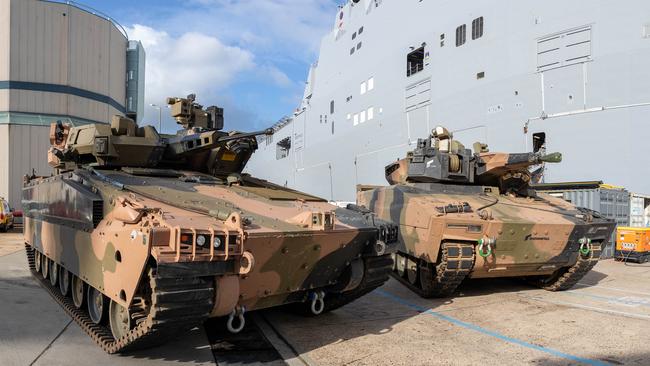Hope fades of progress on IFVs
The long-running LAND 400 Phase 3 project is one of the casualties of the DSR, which has reduced Army’s original aim of acquiring 450 tracked, heavily armoured vehicles down to a low 129.

The long-running LAND 400 Phase 3 project is one of the casualties of the Defence Strategic Review (DSR), which has reduced army’s original aim of acquiring 450 tracked, heavily armoured vehicles down to a low 129.
Before this new shock to industry, Defence had already asked both bidders – Hanwha from South Korea with the Redback and Germany’s Lynx from Rheinmetall – to quote on 300 IFVs, so the warnings of a rescoping have been apparent for months.
To translate the smaller numbers into dollars, this will reduce by about $10bn the amount that the Australian manufacturing sector was anticipating from the construction phase of the project.
One of the original ideas behind a local build was that it could offset some of the damage caused by shutting down the local car industry, but strangely for a Labor government, that seems to have gone by the wayside.
Worse than that, the promises that the DSR would clear the way for rapid progress on projects has been dashed in this case. Rather than now selecting the winner and getting on with it, both companies are faced with a lengthy and expensive process that might be close to a new tender.
Just days ago, Defence asked for re-pricing based on the new lower numbers, including for fully imported solutions.
Gathering this amount of information takes time and effort because the equation is much more complex once 30-year support arrangements are included.
Several more months of work will be needed by industry – and the length of time it will take the government to make a final decision is unknowable. As a senior insider once remarked: when Defence sees light at the end of the tunnel, we build more tunnel.
The department already has a vast amount of information on the two vehicles. The previous rigorous test and trials phase of the project – called the Risk Mitigation Activity – saw Hanwha and Rheinmetall each deliver three of their IFVs to army, which tested their mobility and durability across the length and breadth of Australia. Their weapons, sensors and subsystems were extensively scrutinised.
Because of the DSR, the balance of Australia’s armoured forces looks decidedly lopsided
One of each was blast tested to the point of destruction to verify their resistance to mine explosions and IED attacks. They were subjected for a year to all the mud, dust, water and roads – good and bad – that operations in Australia and the region could possibly involve. This phase concluded in November 2020.
After that came a full tender with vast amounts of information being provided about price, local content, manufacturing plans, software development plans, risk reduction strategies – and more. The DSR put all of that on hold.
By now Army must know which vehicle is preferred after years of study – and further delay diminishes their own fighting power. The vehicles the new IFVs will replace are the Vietnam-era M-113s, which are now so old and vulnerable that they cannot be used in combat – let alone in the high intensity conflicts that are becoming more likely.
They are a vital component of Army’s central combined arms doctrine of mechanised mobility, protection and firepower. These are offensive operations involving a mix of Main Battle Tanks (MBTs), Infantry Fighting Vehicles (IVFs) – the ones for Australia will be able to carry six soldiers and have a crew of three – mobile artillery, air power and many other assets, particularly for surveillance and reconnaissance.
When this works well, quick victories are achieved, such as Desert Storm or the Six Day War. When it is poorly implemented – the Russian invasion of Ukraine is an example – the results can be disastrous since tanks not supported by enough infantry and artillery can themselves be quite vulnerable. In theory, a soldier with a bucket of petrol and a lot of nerve could destroy a modern unsupported MBT by sneaking up on it.
Because of the DSR, the balance of Australia’s armoured forces looks decidedly lopsided. We are cutting back on the number of modern IFVs – and self-propelled artillery – but increasing the size of the MBT fleet with $4bn to be spent purchasing 75 refurbished 30-year-old Abrams M1A2s from the US. These will have zero local content.
The government says that the MBTs will increase the mobility of the Army, but the opposite is the case. While tanks have good power-to-weight ratios and low ground pressure due to wide tracks what they cannot overcome is their massive weight. At 68 tonnes the M1A2s are limited in how they can be deployed because there are load limits to consider, particularly for landing craft, bridges and rolling stock.
It is for these reasons that the US Marine Corps has scrapped their MBTs and is far more reliant on nimbler IFVs packing a variety of sensors and weapons.
No amount of wishful thinking can overcome gravity, except in Australia.


